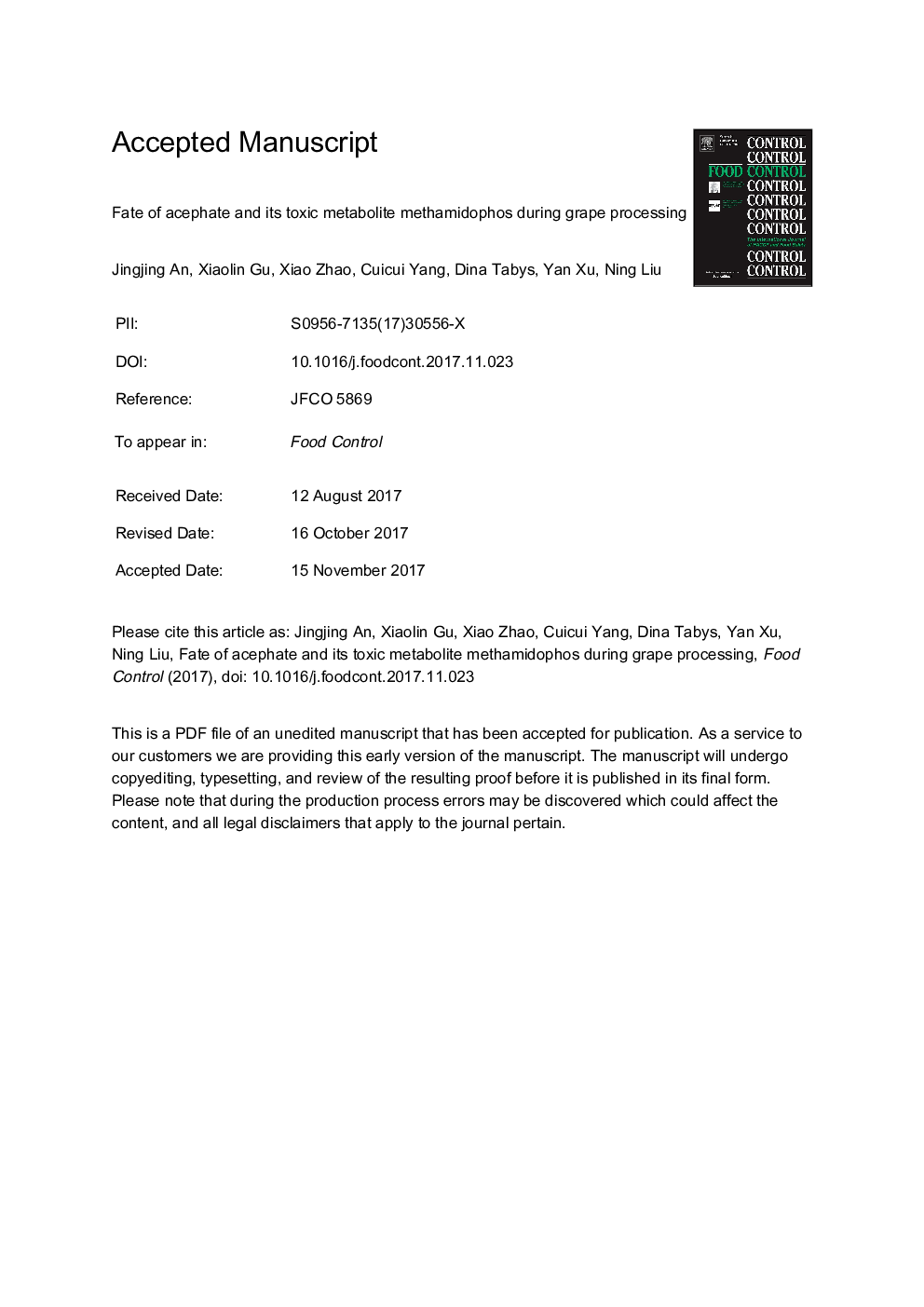| کد مقاله | کد نشریه | سال انتشار | مقاله انگلیسی | نسخه تمام متن |
|---|---|---|---|---|
| 8888146 | 1628378 | 2018 | 27 صفحه PDF | دانلود رایگان |
عنوان انگلیسی مقاله ISI
Fate of acephate and its toxic metabolite methamidophos during grape processing
ترجمه فارسی عنوان
سرنوشت آسپهات و متامیدوفوس متابولیک آن در طی پردازش
دانلود مقاله + سفارش ترجمه
دانلود مقاله ISI انگلیسی
رایگان برای ایرانیان
کلمات کلیدی
موضوعات مرتبط
علوم زیستی و بیوفناوری
علوم کشاورزی و بیولوژیک
دانش تغذیه
چکیده انگلیسی
This study aimed to determine the degradation of acephate and its metabolite methamidophos during different kinds of grape processing, using a simple gas-chromatographic method with a flame photometry detector. During wine processing, there was no significant effect of crushing, pressing, and clarification on the removal of acephate and methamidophos, whereas 58.9% acephate was dissipated during the fermentation step. Aging and bottling resulted in a reduction of 43.2% and 30.6% for acephate and methamidophos, respectively. The processing factors (PFs) of acephate during the wine process were <1, whereas those of methamidophos were >1. Moreover, washing with hydrogen peroxide solutions effectively reduced the levels of acephate and methamidophos present in the grape skin and pulp more than other washing solutions did (tap water, detergent solution, acetic acid solution, NaCl solution, and Na2CO3 solution). Finally, the best removal rate of acephate residue and the minimum methamidophos level was achieved at a fermentation temperature of 22.4 °C, yeast inoculum of 8.5â°, and pH of 3.8. These results suggest that the potential metabolites of parent pesticide should be paid more attention during wine processing.
ناشر
Database: Elsevier - ScienceDirect (ساینس دایرکت)
Journal: Food Control - Volume 86, April 2018, Pages 163-169
Journal: Food Control - Volume 86, April 2018, Pages 163-169
نویسندگان
Jingjing An, Xiaolin Gu, Xiao Zhao, Cuicui Yang, Dina Tabys, Yan Xu, Ning Liu,
